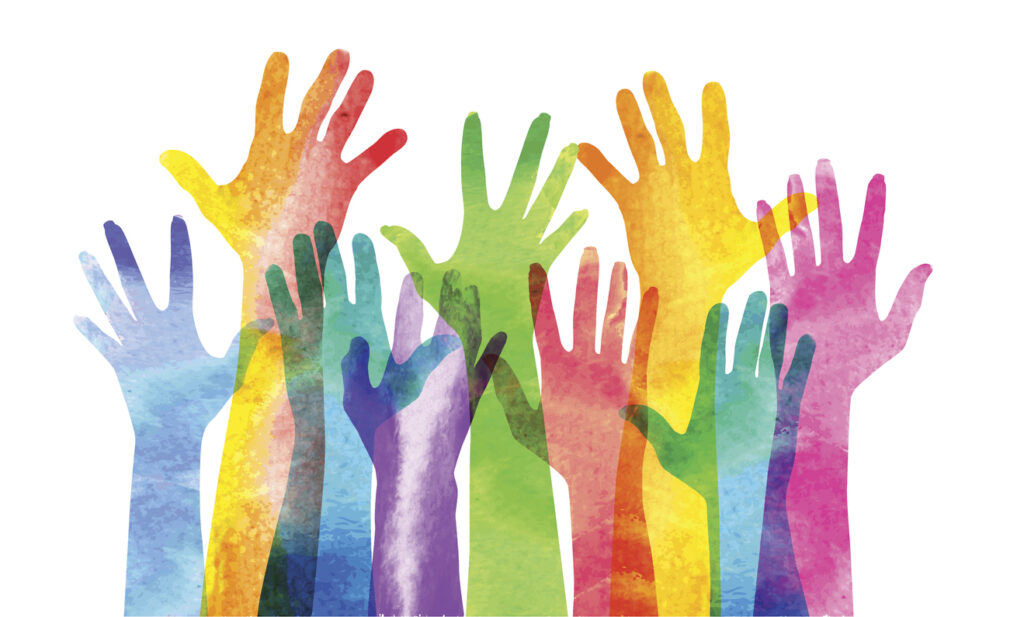Inclusive design is an approach to designing that considers the needs of the widest possible audience, exploring and examining similarities – but also differences – to inform design decisions. In its simplest form it is about doing the right thing: celebrating the diversity of people and empowering us all to design a world that we can all be part of.
By considering users with different abilities at the start of the design process, you will ultimately create a design that works for more people, in more circumstances.
When used in the L&D context, this problem-solving framework ensures that learning interventions are more inclusive, and people benefit from richer, deeper learning experiences. This in turn leads to greater organisational inclusivity and ultimately, organisational effectiveness.
Designing for all
The early focus of the inclusive design approach was to increase accessibility factors for the ageing population and to design in a way that doesn’t exclude people with disabilities. It has been increasingly applied to many disciplines of design since it was first used in the 1990s.
Perhaps the biggest shift in this thinking is that inclusive design is for all of us; whether a disability is permanent or not. In this way, we all have a need for inclusive design in our daily lives.
A recent rise in interest has brought about a steady realisation that by considering users with different abilities at the start of the design process, you will ultimately create a design that works for more people, in more circumstances. This shift also acknowledges that design is not about creating one design for all, rather it’s about creating the right solution for the right people.
Three mapping exercises
In the L&D context, let’s consider the circumstances a person may experience some degree of disability when engaging with video/media-based learning content. The user’s disability could be permanent, such as having a visual impairment, or temporary, like an eye infection or situational, like being sat in direct sunlight. Since all of these things would hinder a learner’s ability to understand the content in front of them, one thing a designer might do when designing for inclusivity is to ensure good contrast on the screen on all video/media content.
As well as benefitting from more inclusive designs and experiences you will also start to introduce a mindset shift and new approach within your team and organisation.
Instructional designers and learning experience facilitators can benefit from design-led thinking by employing the following three mapping exercises to ensure they are considering their end user, understanding their organisational requirements and bringing their key stakeholders along with them in the learning process.
Stakeholder mapping
By pausing to consider what stakeholders you need to bring with you, you’ll create learning programmes that are more successful.
Inclusive design can only be successful if it’s embedded in all of your projects, so write down which teams and people you need to take with you on your design process and keep them abreast of your plans and processes.
You might want to plan how you deliver the message to each group to cater for their needs and preferred communication style. Consider linking into their personal drivers and construct a compelling story for each stakeholder group.
Learning journey mapping
By mapping out the current touchpoints your learner comes into contact with in their learning environment you’ll begin an approach that allows you to track progress and enable you to introduce changes mindfully.
Compare the touchpoints you document – including the ideal environment you are striving for – and find opportunities for improvement. While it’s crucial to understand your end user, you can’t design without considering the organisational context.
Journey mapping is great way to create a collective understanding of your users’ experience. If you position the map in a communal area, you can use it as a talking point and build on it as your user journey shifts and evolves.
Empathy mapping
By the end of the exercise you’ll have a greater understanding of what makes your learners tick on a deeper level. This tool provides a framework to capture what we already know about our users in one place, uncover any blind spots, and identify potential opportunities for improvement.
To better understand who you’re designing for, use an empathy map by creating a diagram, dividing it into quadrants, and designating a quadrant for each of the following: ‘says’, ‘thinks’, ‘does’ and ‘feels. Using information and data about your users, fill in each quadrant with descriptions of how they operate in each of the four areas.
You’ll get the most out of empathy mapping by inviting a diverse group of people to input into the exercise. Don’t be afraid to highlight gaps in your knowledge, this is an output that can help you progress your project.
These three people-focused mapping exercises are collaborative and inclusive in nature. By using these you will begin to co-design a collective understanding of your users, build a visual of the learning journey and take key stakeholders along the journey with you. As well as benefitting from more inclusive designs and experiences you will also start to introduce a mindset shift and new approach within your team and organisation.
Interested in this topic? Read Can digital learning be a catalyst for diversity and inclusion?
Inclusive design is an approach to designing that considers the needs of the widest possible audience, exploring and examining similarities – but also differences – to inform design decisions. In its simplest form it is about doing the right thing: celebrating the diversity of people and empowering us all to design a world that we can all be part of.
By considering users with different abilities at the start of the design process, you will ultimately create a design that works for more people, in more circumstances.
When used in the L&D context, this problem-solving framework ensures that learning interventions are more inclusive, and people benefit from richer, deeper learning experiences. This in turn leads to greater organisational inclusivity and ultimately, organisational effectiveness.
Designing for all
The early focus of the inclusive design approach was to increase accessibility factors for the ageing population and to design in a way that doesn’t exclude people with disabilities. It has been increasingly applied to many disciplines of design since it was first used in the 1990s.
Perhaps the biggest shift in this thinking is that inclusive design is for all of us; whether a disability is permanent or not. In this way, we all have a need for inclusive design in our daily lives.
A recent rise in interest has brought about a steady realisation that by considering users with different abilities at the start of the design process, you will ultimately create a design that works for more people, in more circumstances. This shift also acknowledges that design is not about creating one design for all, rather it’s about creating the right solution for the right people.
Three mapping exercises
In the L&D context, let’s consider the circumstances a person may experience some degree of disability when engaging with video/media-based learning content. The user’s disability could be permanent, such as having a visual impairment, or temporary, like an eye infection or situational, like being sat in direct sunlight. Since all of these things would hinder a learner’s ability to understand the content in front of them, one thing a designer might do when designing for inclusivity is to ensure good contrast on the screen on all video/media content.
As well as benefitting from more inclusive designs and experiences you will also start to introduce a mindset shift and new approach within your team and organisation.
Instructional designers and learning experience facilitators can benefit from design-led thinking by employing the following three mapping exercises to ensure they are considering their end user, understanding their organisational requirements and bringing their key stakeholders along with them in the learning process.
Stakeholder mapping
By pausing to consider what stakeholders you need to bring with you, you’ll create learning programmes that are more successful.
Inclusive design can only be successful if it’s embedded in all of your projects, so write down which teams and people you need to take with you on your design process and keep them abreast of your plans and processes.
You might want to plan how you deliver the message to each group to cater for their needs and preferred communication style. Consider linking into their personal drivers and construct a compelling story for each stakeholder group.
Learning journey mapping
By mapping out the current touchpoints your learner comes into contact with in their learning environment you’ll begin an approach that allows you to track progress and enable you to introduce changes mindfully.
Compare the touchpoints you document – including the ideal environment you are striving for – and find opportunities for improvement. While it’s crucial to understand your end user, you can’t design without considering the organisational context.
Journey mapping is great way to create a collective understanding of your users’ experience. If you position the map in a communal area, you can use it as a talking point and build on it as your user journey shifts and evolves.
Empathy mapping
By the end of the exercise you’ll have a greater understanding of what makes your learners tick on a deeper level. This tool provides a framework to capture what we already know about our users in one place, uncover any blind spots, and identify potential opportunities for improvement.
To better understand who you’re designing for, use an empathy map by creating a diagram, dividing it into quadrants, and designating a quadrant for each of the following: ‘says’, ‘thinks’, ‘does’ and ‘feels. Using information and data about your users, fill in each quadrant with descriptions of how they operate in each of the four areas.
You’ll get the most out of empathy mapping by inviting a diverse group of people to input into the exercise. Don’t be afraid to highlight gaps in your knowledge, this is an output that can help you progress your project.
These three people-focused mapping exercises are collaborative and inclusive in nature. By using these you will begin to co-design a collective understanding of your users, build a visual of the learning journey and take key stakeholders along the journey with you. As well as benefitting from more inclusive designs and experiences you will also start to introduce a mindset shift and new approach within your team and organisation.
Interested in this topic? Read Can digital learning be a catalyst for diversity and inclusion?








